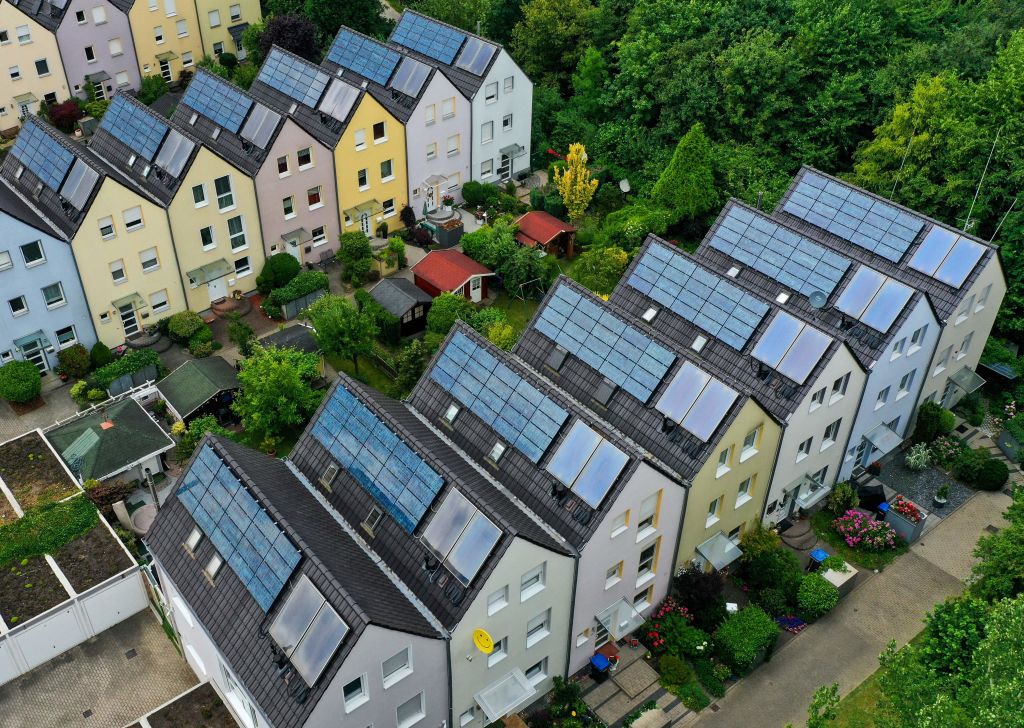
The United Nations’ new “progress report” on climate change confirms the world is careening deeper into the danger zone. The fires, droughts, floods, storms, and other extreme weather that have taken so many lives and livelihoods this year underscore the mountain of evidence about the dangers of a warming world. And yet somehow, we are still letting the planet burn.
Nearly eight years ago, hope was running high as representatives from over 195 countries gathered in the City of Light and hammered out a landmark pact to stave off the worst consequences of climate change. The Paris Agreement is as sweeping as it is historic, aiming to rapidly curb planet-warming greenhouse gas emissions, adapt to a dangerously overheating world, and ensure that all countries have the financial resources they need to tackle the climate crisis head on.
On Sept. 8, the U.N. delivered its first accountability report: a full catalog of actions countries have taken since Paris, known as the Global Stocktake synthesis report. The findings are sobering but also enlightening. The report makes clear that we’re past the point of needing incremental change, but it is also straightforward about what solutions offer the most hope. Most importantly, the report gives us the keys to unlock the transformation needed for countries to keep the promises they made in Paris.
The report warns that we have a rapidly narrowing window to meet the goal set in the Paris Agreement’s of pursuing efforts to limit warming to 1.5 degrees Celsius above pre-industrial temperatures. If we do not take drastic action to avoid soaring beyond this target, the cost of climate disasters we are already seeing today will exponentially increase. And some of the destruction will be irreversible—we could, for example, risk losing the Amazon rainforest and destroying the livelihoods of 47 million people who depend on it.
The good news is we know how to avoid this fate. Four critical areas need urgent attention: fossil fuels, resilience, food, and finance.
Decarbonizing our energy and transportation systems is paramount. Burning fossil fuels poses the biggest threat to humanity and yet coal, oil, and gas still account for over 80% of the world’s energy. Fortunately, solar and wind power have grown exponentially in the past two decades as costs plummet, while electric car sales have shot up from 5% of the global car market a couple years ago to 15% today. While this progress is promising, to reach our climate goals countries must double down on these trends—from tripling nations’ renewable energy capacity to rapidly electrifying transport —and the world’s reliance on fossil fuels must rapidly decline this decade.
The report also finds that investments to bolster resilience are failing to keep pace with climate impacts. Climate disasters are taking lives and costing billions—especially in poor and vulnerable countries—in part because wealthy nations have been too slow to provide ample and accessible support for adaptation, despite previous promises. Developed countries have already agreed to double adaptation finance to $40 billion a year by 2025—an improvement for sure, but far below the up to $340 billion a year that the developing world will need by 2030. This disconnect cannot stand. And vulnerable countries are already facing devastating losses and damages that will require even more funding to recover. Countries can take a critical step forward by operationalizing a U.N. Loss and Damage Fund—agreed to by nations last year—to provide predictable support for vulnerable countries in need.
At the same time, we need to focus on how the world produces and consumes food. This is not only vital to building resilience, but also critical for reducing emissions, stopping deforestation, protecting livelihoods and ensuring food security for a growing population. Countries must agree to reduce greenhouse emissions from agricultural production by 25% by 2030 from 2020 levels in order to limit temperature rise to 1.5°C. Countries should also halve food waste by 2030, and equitably shift to more healthy and sustainable diets, which can mitigate a fifth of global emissions. And they must follow through on their commitments to halt deforestation, as 145 countries agreed to under the Glasgow Forests Declaration in 2021.
Finally, the only way that we have any chance of combating the climate crisis is if we fund solutions instead of subsidizing fossil fuels. Developing countries need climate finance to be available, accessible, and affordable—and not worsen their debt burden. Around $5 trillion of capital will be needed every year by 2050 to meet climate and biodiversity goals. These investments are essential to scale low-carbon technologies, swap out fossil fuel infrastructure with sustainable alternatives and ensure that vulnerable countries are able to defend themselves against increasingly severe climate impacts as well as preserve biodiversity.
The annual U.N. climate conference, COP28, held in Dubai this December offers an historic opportunity to make substantial progress on all these fronts. Our leaders must treat it as an emergency summit and adopt a rapid response plan to the Global Stocktake that transforms every major economic system at a pace and depth not seen before.
The stakes are extremely high. The Global Stocktake report gives us the clearest picture of how our collective action has added up and what solutions are the most promising. Our future depends on national leaders turning this stark assessment into a catalyst for transformative action.
More Must-Reads from TIME
- Inside Elon Musk’s War on Washington
- Meet the 2025 Women of the Year
- The Harsh Truth About Disability Inclusion
- Why Do More Young Adults Have Cancer?
- Colman Domingo Leads With Radical Love
- How to Get Better at Doing Things Alone
- Cecily Strong on Goober the Clown
- Column: The Rise of America’s Broligarchy
Contact us at letters@time.com